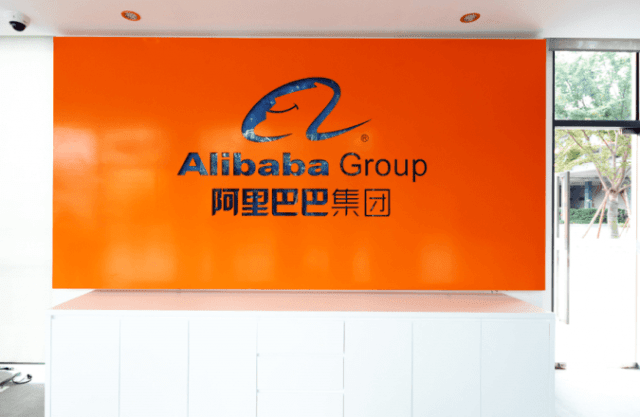How to trade Uber

Learn all about Uber, with information on the company’s history and share price journey, its share trading hours, and how to trade Uber share CFDs with Capital.com.
Go to market page
What is Uber?
Founded in 2009 by Garrett Camp and Travis Kalanick, Uber is a technology platform that connects taxi seekers with drivers for hire. It also offers services like food delivery through its Uber Eats brand, and freight and logistics solutions. Fuelled by significant amounts of investment capital, the company has expanded to thousands of cities worldwide, making it one of the most recognised brands in the so-called gig economy. The app also includes features like fare estimates, route tracking, driver ratings, and various payment options, which contribute to its widespread use and popularity.
Uber first listed its shares in 2019, trading on the New York Stock Exchange under the ticker symbol ‘UBER’ in one of the most hotly anticipated IPOs of the year.
In the 2023 fiscal year, the company’s revenue amounted to some $37.2bn.
What is the Uber share price history?
The Uber share price history since its IPO in 2019 has been dramatic. It went public at $45 a share and initially struggled to make headway as concerns about profitability, as well as the poor performance of rival Lyft’s IPO earlier in the year, caused uncertainty about future prospects. Further issues surrounding ongoing regulatory challenges and leadership changes contributed to a rocky first few months as a listed company.
The onset of the Covid-19 pandemic in 2020 saw the stock’s value decrease by almost 50% as travel restrictions and lockdowns became the order of the day. However, Uber Eats saw an uptick as demand increased for food deliveries. Post lockdowns, the stock recovered amid cost-cutting measures including layoffs and offloading of its autonomous vehicle division. As ride sharing began to recover and vaccinations increased at the start of 2021, the share price increased in line with other tech stocks. However, 2022 was tumultuous as the company faced challenges such as rising interest rates, inflationary pressures and a hike in operating costs. International legal challenges over driver classification also impacted Uber’s business model and cost structure, leaving investors unconvinced.
2023 marked a turning point for the stock though, as profitability increased and bookings rose across ride-hailing, food delivery and commercial freight. The longer-term plan will likely involve autonomous self-driving vehicles, meaning eliminating the cost of human drivers.
(Past performance is not a reliable indicator of future results)
What factors might affect the Uber live share price?
The Uber live share price can be impacted by a range of key sector-specific fundamental events. Here are a few of the main factors that traders should watch out for.
- General financial performance/earnings reports: as with all listed companies, quarterly earnings are keenly observed by shareholders and business analysts. Particularly in a sector such as Uber’s, revenue growth, profitability and cash flow are key metrics to follow, alongside cost management.
- Regulatory environment: since Uber’s operations are global, it faces a considerable challenge to keep up with regional regulations. Laws impacting gig workers (driver status) can impact operational costs and the wider business model, and cause share price volatility as a result.
- Product innovation: from autonomous vehicles to advanced mapping technologies, new product strategies are liable to impact the Uber financials and cause share price movement in turn. This means keeping an eye on the new features being introduced, as well as how competitors such as Lyft and Bolt are tracking in market share, is helpful for understanding the potential drivers of price.
- Management: changes in leadership, strategic pivots or major leadership decisions are closely watched by investors. For example, the 2017 resignation of co-founder Travis Kalanick against a backdrop of allegations of systemic sexism and harassment highlighted a deep-rooted problem with corporate culture and governance that significantly impacted the company’s reputation, and hit its share price.
- Economic conditions: any major macroeconomic events such as interest-rate hikes, economic downturns and high inflation can hit the discretionary spend budgets of would-be subscribers and affect their travel and commuting patterns.
What are the Uber stock trading hours?
The Uber stock trading hours are Monday to Friday from 2:30pm to 9:00pm (UK time), corresponding to 1:30pm to 8:00 in UTC.
If you choose to trade CFDs, you can follow the Uber stock performance live in USD with the comprehensive Uber share price chart.
Monitoring the company’s activity can help you to keep an eye out for any key fundamental or technical events that may affect short-term movements in the share value.
How to trade Uber shares with CFDs
If you want to take a position on Uber shares, you have two options. First, you can buy physical shares in the company through the exchange on which it’s listed. In this case, investing in Uber stock means you will own a share, or shares, in the company. This can be considered a long-term investment, as you’re hoping for the price to rise over time.
Alternatively, you can trade a derivative product such as a contract for difference (CFD) on the underlying Uber stock market price, and speculate on its price movements without actually owning the asset. A CFD is a financial contract, typically between a broker and a trader, where one party agrees to pay the other the difference in the value of a security, between the opening and closing of the trade.
Unlike physical share ownership, you can either hold a long position (speculating that the price will rise) or a short position (speculating that the price will fall). This is considered a short-term investment or trade, as CFDs tend to be used within shorter timeframes.
Another The key difference between buying physical Uber shares and trading through a derivative is the leverage that can beis employed with the latter. CFDs are typically traded on margin, which means that a trader can gethas exposure to larger positions with a relatively small outlay. This amplifies the potential profits, but also the potential losses, making leveraged trading risky. You can learn how to trade shares in our comprehensive guide to shares trading.
To trade Uber stock CFDs with us, just sign up for a Capital.com account, and once you’re verified, you can use our advanced web platform or download our intuitive yet easy-to-use app. It’ll take just a few minutes to get started and access the world’s most-traded markets.
Why trade Uber CFDs with Capital.com?
Trading Uber CFDs with Capital.com means you’ll enjoy an intuitive, easy-to-use platform, 24/7 support, fair and transparent pricing, along with award-winning education to help build your experience in the markets.* You can seamlessly integrate our smart platform with elite third-party software TradingView and MT4, and refine your strategies with our risk-free demo.
*Awarded best-in-class for education at ForexBrokers.com’s 2024 Annual Awards
FAQs
Who owns Uber?
The ownership of Uber as of 2024 comprises individuals like managing director Dara Khosrowshahi, Saudi businessman Yasir Al-Rumayyan and former Uber executive Nelson J. Chai, as well as institutions such as the Vanguard Group, BlackRock, Inc., and Morgan Stanley.
How much are Uber shares?
As with any asset, the Uber share price is dynamic and liable to change at any time. If you’re trading this stock, it’s important to check out the Uber chart frequently to keep on top of price movements, as well as retain a strong understanding of the fundamental and technical influences that can cause the price to shift.
What market is Uber listed on?
Uber has been listed on the New York Stock Exchange since its IPO in 2019.
How to invest in Uber stocks
Those planning to invest in Uber have the option to buy and own the physical share through means such as a stockbroker or investing platform, with the goal to buy low and sell high. Alternatively, derivatives such as CFDs, can give you leveraged exposure to the underlying price without ownership. However, leverage amplifies both profits and losses, making it risky.
You can create a CFD account and start trading by clicking on the link below.
Is Uber stock a good buy?
Whether Uber is a good stock to buy depends on risk tolerance, trading strategies, and market conditions. Technical indicators such as the RSI or MACD may help make sense of historical price action and develop your technical analysis skills. Meanwhile, a knowledge of fundamental factors like competitive standing, earnings releases, and the regulatory landscape are all essential to gain a handle on the fundamental drivers of price.
Visit our other complete guides

How to trade NIO
